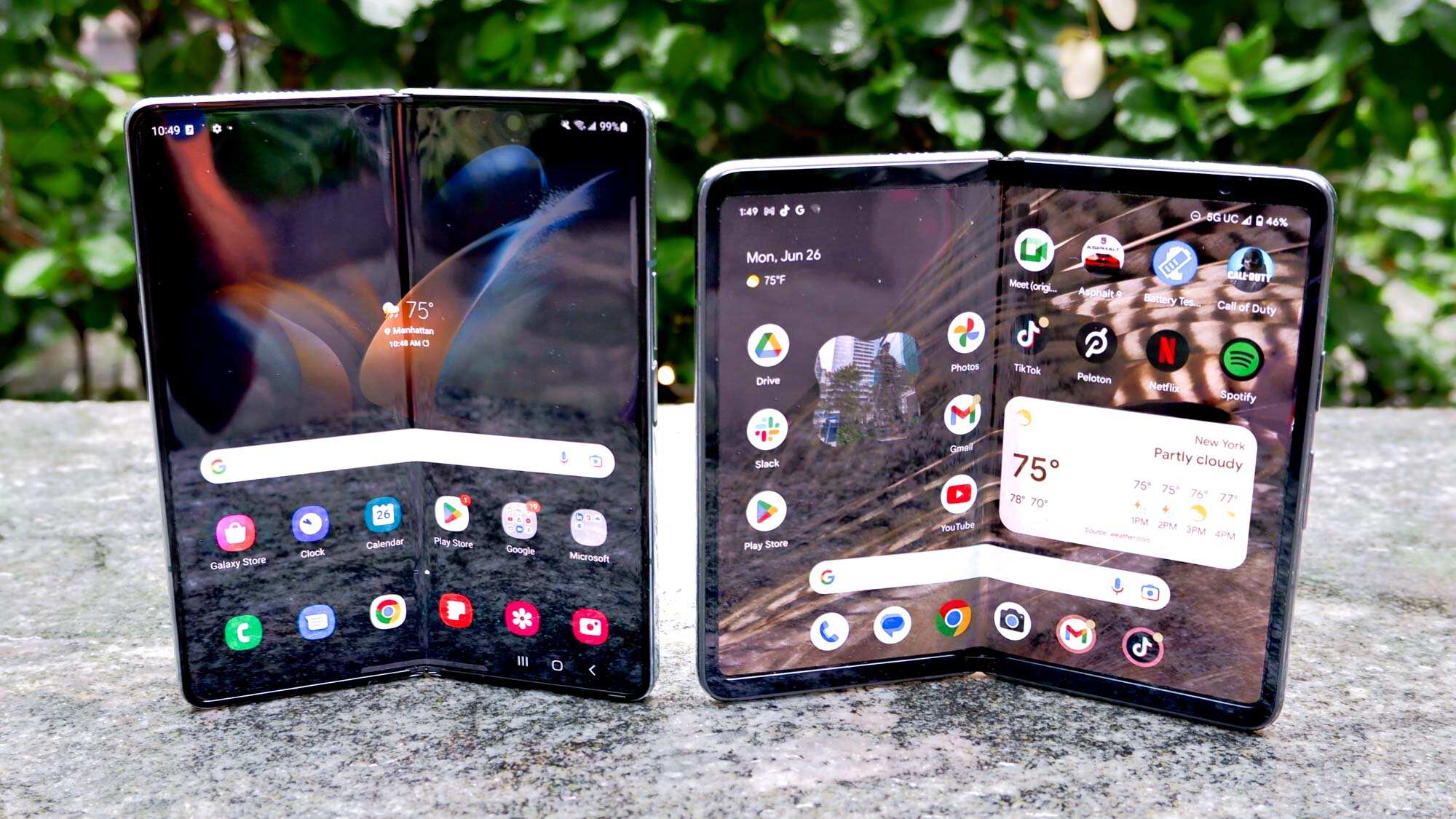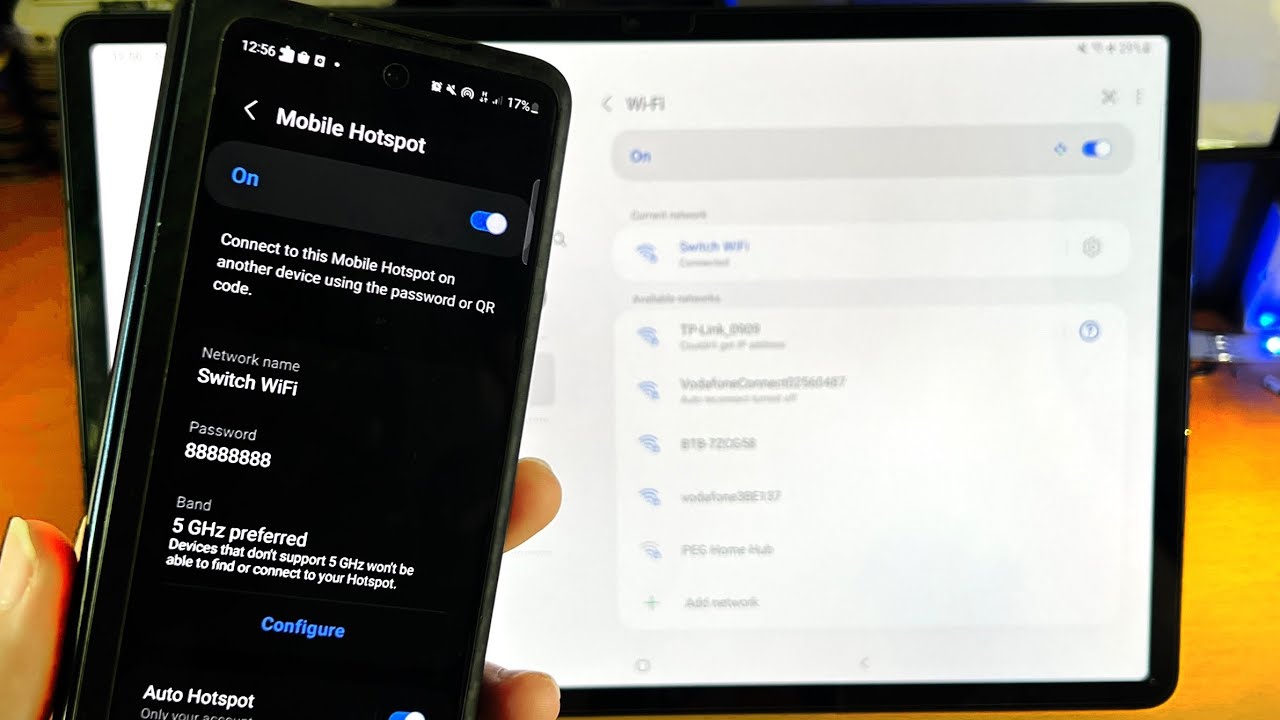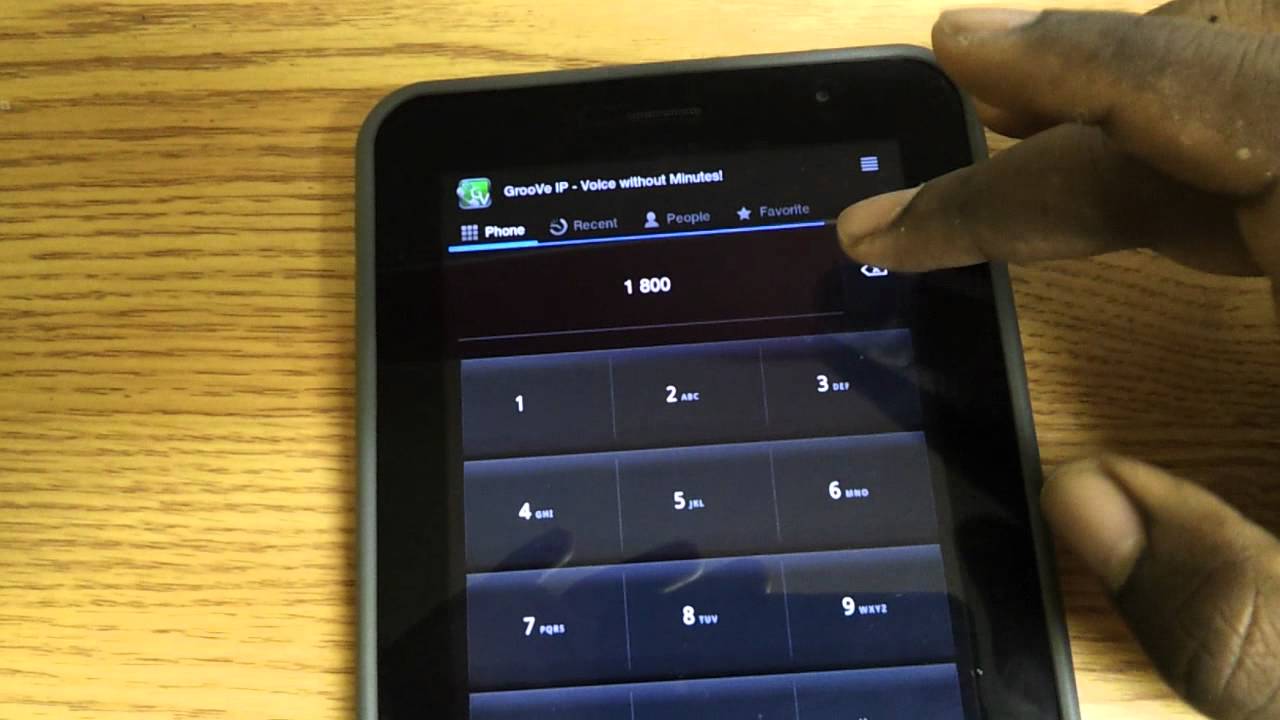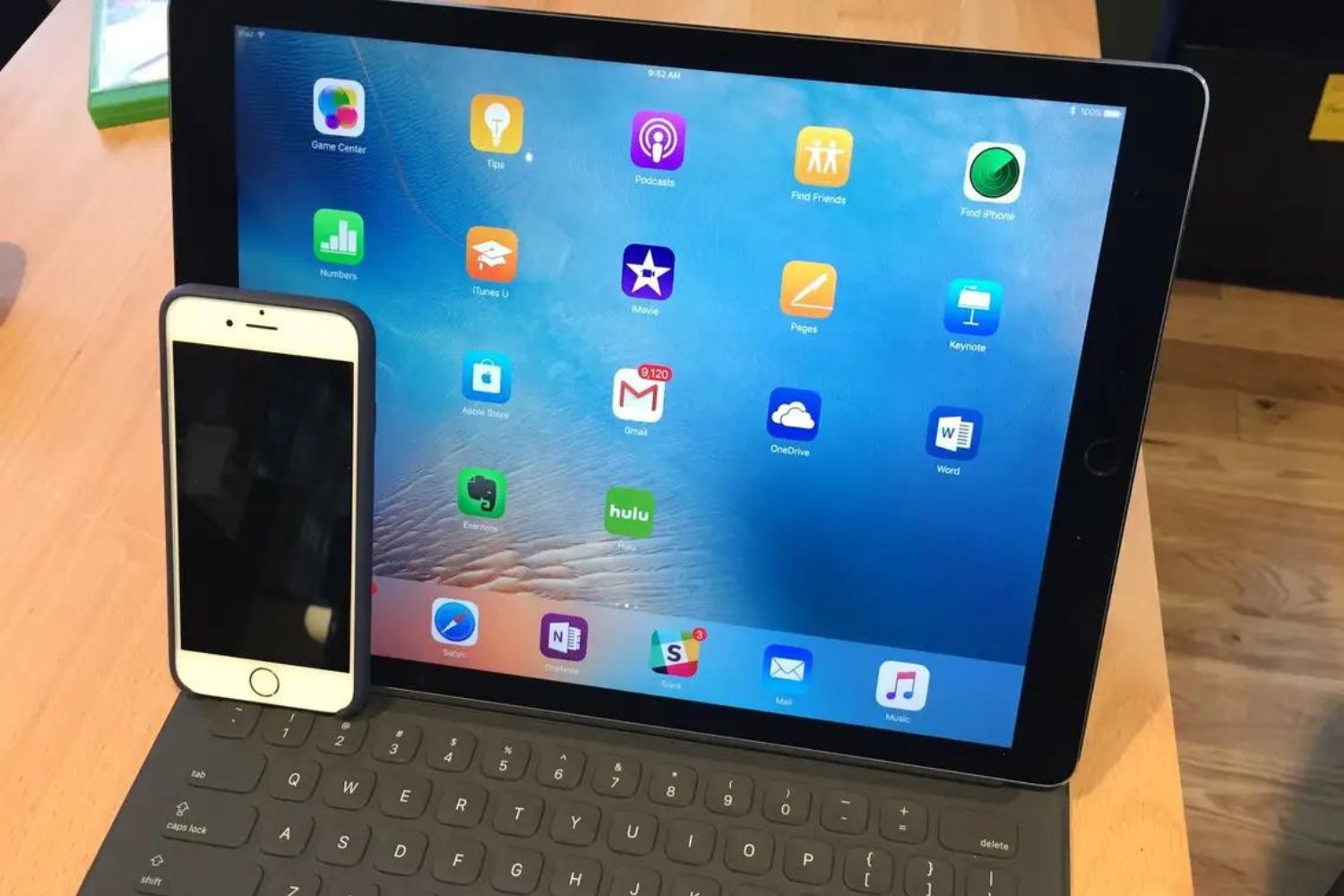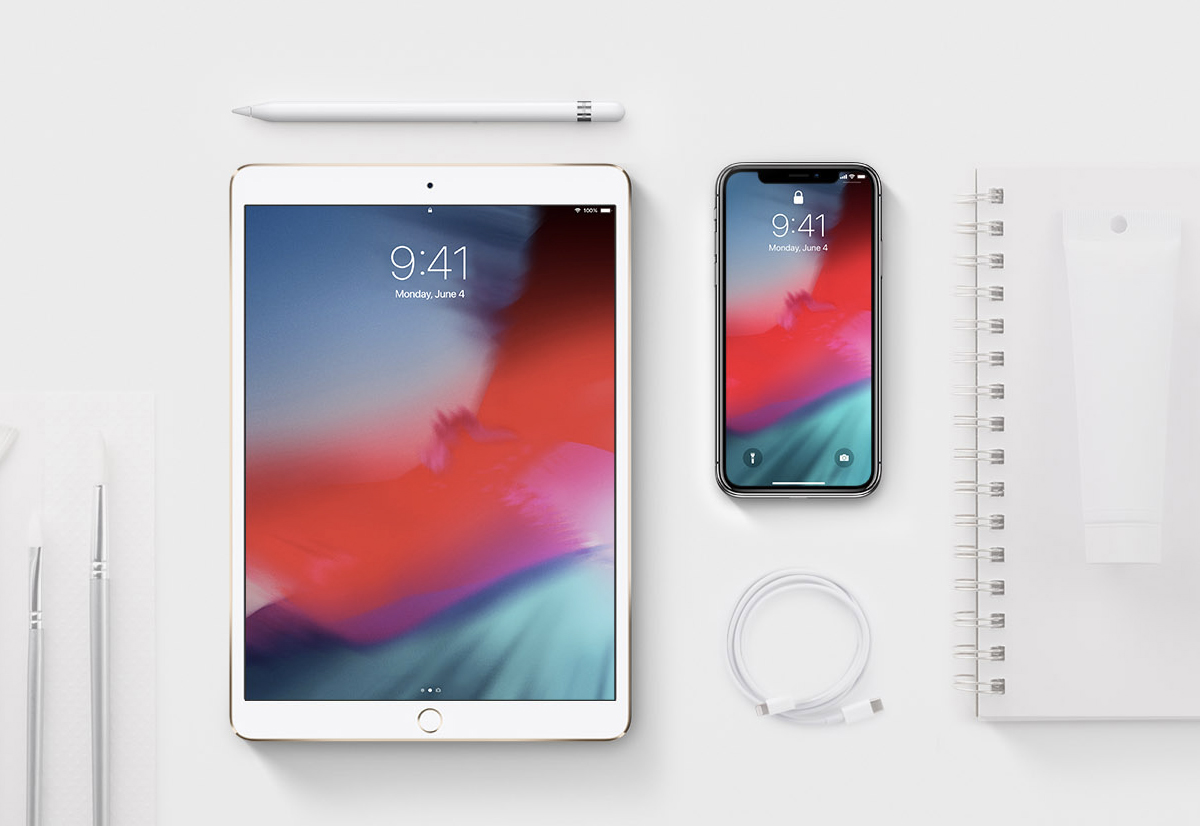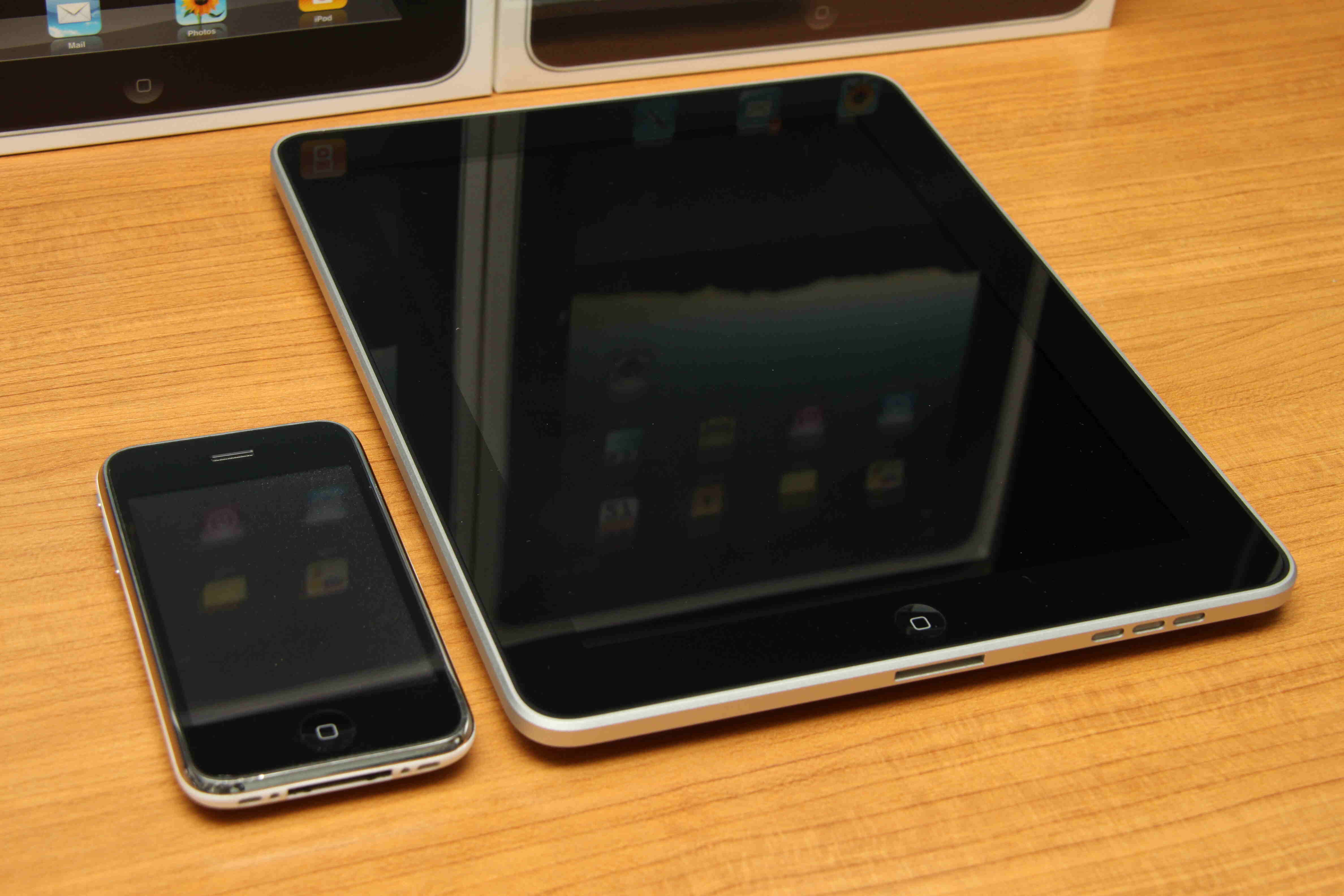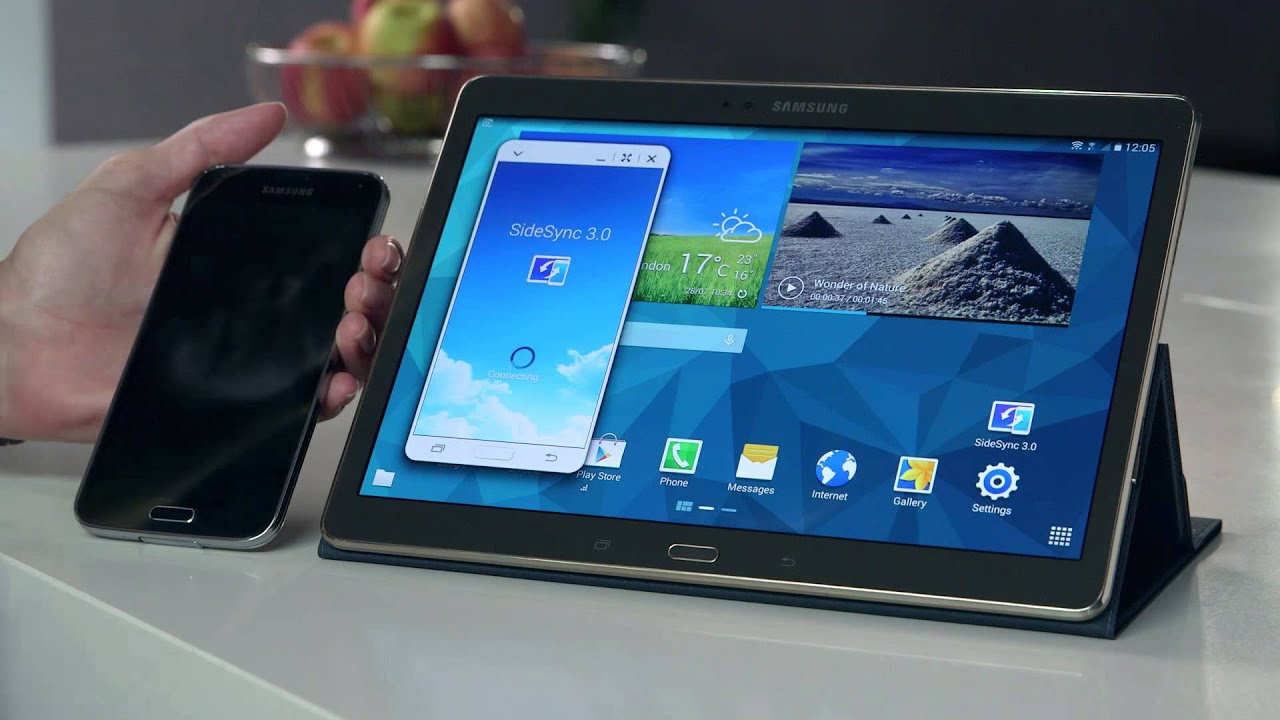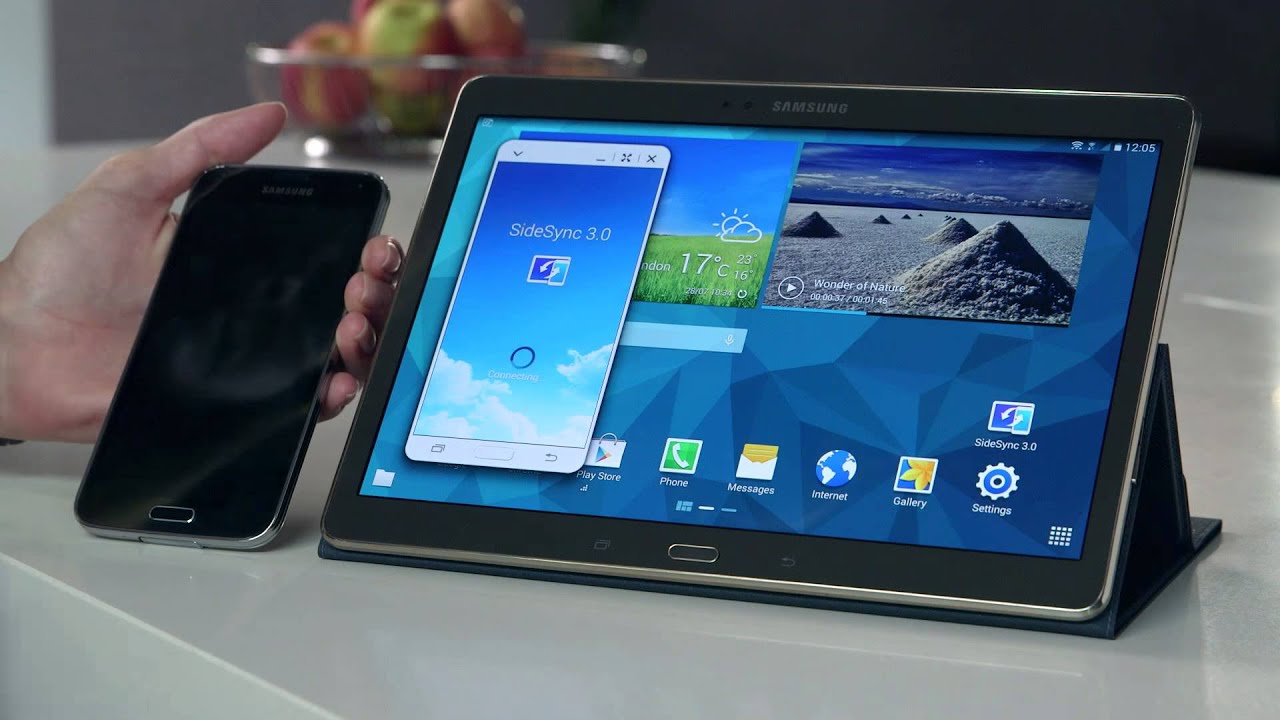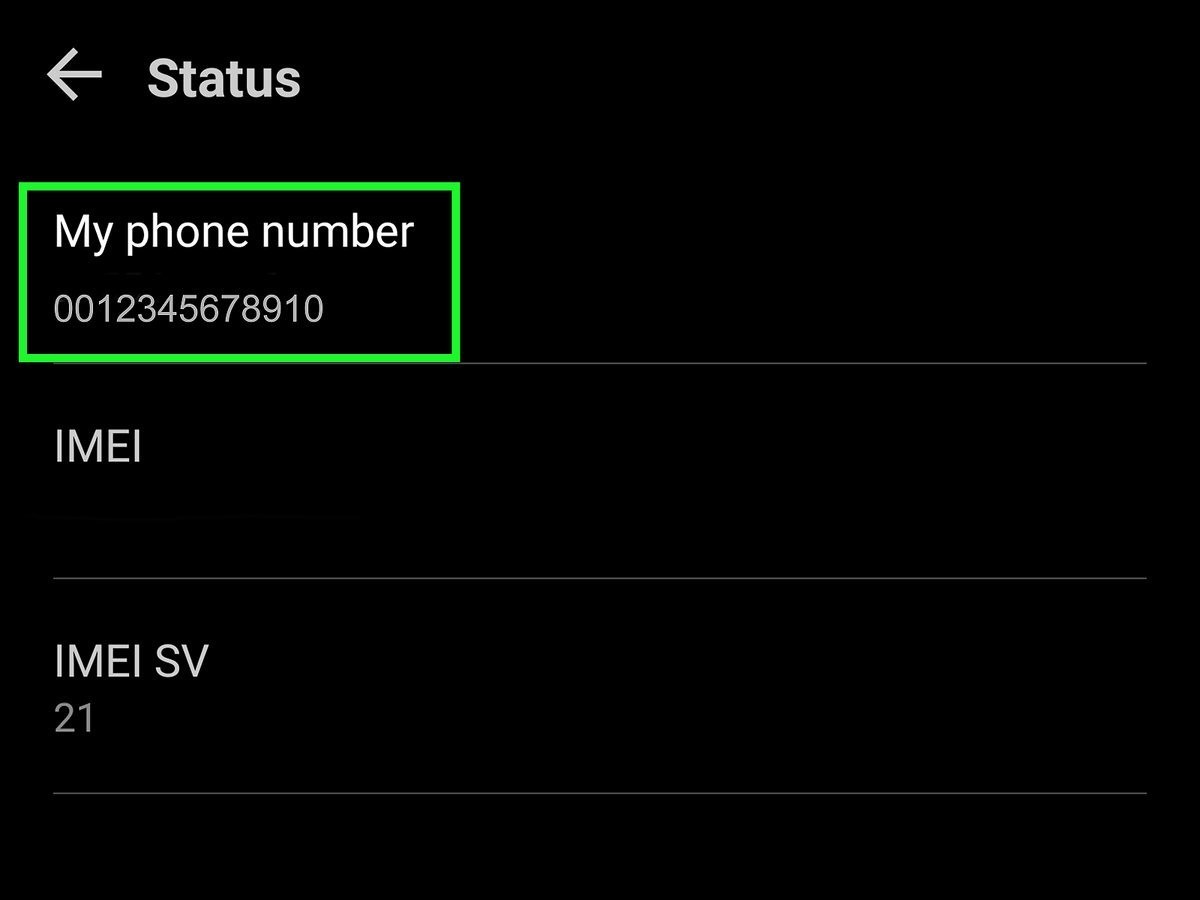Introduction
A phone tablet, also known as a phablet, is a device that combines the features and functionalities of a smartphone and a tablet. This hybrid device offers users the convenience of a larger screen size while still retaining the portability and mobility of a smartphone. With advancements in technology, phone tablets have become increasingly popular, providing a versatile device for communication, productivity, and entertainment.
Phone tablets typically have screen sizes ranging from 5 to 7 inches, which is larger than most smartphones but smaller than traditional tablets. This size allows for a more immersive viewing experience, whether you’re watching movies, playing games, or browsing the internet. Additionally, phone tablets boast powerful processors and ample storage capacity, enabling users to perform tasks with ease and store their favorite apps, media, and files.
The rise of phone tablets can be attributed to the demand for a device that bridges the gap between smartphones and tablets. While smartphones are compact and portable, their smaller screen size can sometimes limit productivity and multimedia experiences. Tablets, on the other hand, offer a larger screen size but can be less portable and convenient to carry around. Phone tablets provide the best of both worlds, offering a balance between functionality and portability.
In this article, we will delve into the features of phone tablets, explore the similarities and differences with smartphones and tablets, discuss the benefits of using a phone tablet, highlight popular phone tablet models and brands, offer guidance on choosing the right phone tablet for your needs, provide tips and tricks for utilizing a phone tablet to its fullest potential, and conclude with a summary of the key takeaways.
Definition of a Phone Tablet
A phone tablet, also referred to as a phablet, is a portable electronic device that combines the features of a smartphone and a tablet. It is designed to provide users with a larger screen size than a typical smartphone while still maintaining the communication capabilities and mobility of a phone.
Phone tablets are characterized by their screen sizes, which typically range from 5 to 7 inches. This larger display allows for a more immersive viewing experience, making it ideal for activities such as watching videos, browsing the internet, and playing games. At the same time, phone tablets are compact and lightweight enough to be comfortably carried in one hand or placed in a pocket or bag.
One of the distinguishing features of phone tablets is their ability to make and receive phone calls. While tablets usually require a separate accessory or application to connect to cellular networks for voice calls, phone tablets have built-in call functionality. Users can use their phone tablets to make calls, send text messages, and stay connected with friends, family, and colleagues, just like they would with a smartphone.
Furthermore, phone tablets share many other features with smartphones and tablets. They typically offer internet connectivity through Wi-Fi or cellular networks, access to a wide range of mobile applications via app stores, cameras for capturing photos and videos, and support for various multimedia formats. Some phone tablets also come with additional features, such as stylus support, fingerprint scanners, and advanced camera capabilities.
In essence, a phone tablet serves as a versatile device that combines the functionality and convenience of a smartphone and a tablet. It offers a larger screen for enhanced multimedia experiences while still providing the essential communication features that we rely on in our daily lives.
Features of a Phone Tablet
Phone tablets offer a wide range of features that make them versatile and valuable devices for users. Here are some of the key features that you can expect to find in a phone tablet:
- Larger Screen Size: One of the standout features of phone tablets is their larger screen size compared to smartphones. With a typical screen size ranging from 5 to 7 inches, phone tablets provide a more immersive viewing experience for multimedia activities like watching movies, playing games, or browsing the web.
- Phone Functionality: Unlike regular tablets, phone tablets have built-in calling functionality, allowing users to make and receive calls without the need for additional accessories or apps. This feature ensures that users can stay connected with family, friends, and colleagues using just one device.
- High-Resolution Display: Phone tablets often feature high-resolution displays, offering crisp and vibrant visuals. This makes them well-suited for tasks that require precise detail, such as reading documents, editing photos, or watching high-definition videos.
- Powerful Processors: Phone tablets are equipped with powerful processors that ensure smooth and fast performance. This enables users to easily multitask, run demanding applications, and switch between different tasks without experiencing lag or slowdowns.
- Ample Storage Capacity: Storage is an essential feature of phone tablets, as it determines how many apps, files, and media you can store on the device. Many phone tablets offer expandable storage options through microSD cards, allowing you to increase the storage capacity according to your needs.
- Operating System: Phone tablets typically run on popular operating systems like Android or iOS, providing access to a wide range of apps and seamless integration with other devices in the same ecosystem. These operating systems also come with regular software updates and enhanced security features.
- Advanced Camera Capabilities: Phone tablets often feature high-quality cameras, allowing users to capture sharp photos and videos. Some models even offer advanced camera capabilities such as image stabilization, manual controls, and low-light performance, making them a handy tool for photography enthusiasts.
- Battery Life: Despite their larger screens and powerful hardware, phone tablets are designed to have sufficient battery life to last through a day of typical use. This ensures that users can stay productive or entertained without constantly worrying about running out of battery power.
These are just a few of the many features that phone tablets offer. The combination of a larger screen, phone functionality, powerful hardware, and versatile features makes phone tablets an attractive option for those looking for a device that combines the best of smartphones and tablets.
Similarities and Differences with Smartphones and Tablets
Phone tablets, smartphones, and tablets are all widely used portable electronic devices, but they differ in terms of size, functionality, and use cases. Let’s explore the similarities and differences between these devices:
Similarities:
- Operating Systems: Phone tablets, smartphones, and tablets often run on the same operating systems, such as Android or iOS. This allows for a consistent user experience and access to a wide range of apps and services.
- Internet Connectivity: All three devices support internet connectivity, allowing users to browse the web, stream media, and access online services through Wi-Fi or cellular data networks.
- Multimedia Capabilities: Phone tablets, smartphones, and tablets feature cameras for capturing photos and recording videos, as well as speakers or headphone jacks for multimedia playback.
- App Ecosystem: Users can download and install apps from app stores on all three devices, enhancing their functionality with a vast selection of applications.
- Communication Features: Smartphones, phone tablets, and some tablets offer communication features like voice calls, text messaging, and video calls, enabling users to stay connected with others.
Differences:
- Screen Size: Smartphones typically have screen sizes ranging from 4 to 6 inches, while tablets have larger screens, starting from 7 inches and going up to 13 inches or more. Phone tablets bridge the gap between the two, offering screen sizes ranging from 5 to 7 inches.
- Portability: Smartphones are the most portable of the three, easily fitting into pockets or small bags. Tablets are larger and less portable, requiring a separate bag or carrying case. Phone tablets strike a balance between portability and screen size, fitting comfortably in one hand or a small bag.
- Phone Functionality: While smartphones and phone tablets have built-in calling capabilities, regular tablets require additional accessories or apps for voice calling.
- Productivity and Multitasking: Tablets, especially larger ones, offer a more immersive experience for productivity tasks such as writing, editing, and multitasking with multiple apps on screen simultaneously. Smartphones and phone tablets typically have more limited multitasking capabilities due to smaller screen sizes.
- Hardware Performance: Phone tablets and tablets generally have more powerful hardware than smartphones, enabling faster processing speeds, better graphics performance, and improved multitasking abilities.
Understanding the similarities and differences among these devices helps you choose the one that best suits your needs, whether you prioritize portability, communication capabilities, productivity, or a combination of features.
Benefits of Using a Phone Tablet
Phone tablets offer several advantages that make them a popular choice among users. Here are some of the key benefits of using a phone tablet:
1. Larger Screen Size:
One of the main benefits of using a phone tablet is the larger screen size compared to smartphones. The larger display enhances the viewing experience, making it ideal for activities such as watching movies, playing games, reading eBooks, and browsing the internet. The increased screen real estate allows for more comfortable reading, better content consumption, and improved productivity.
2. Portability:
Phone tablets strike a balance between portability and screen size. They are more compact and lightweight compared to regular tablets, making them easier to carry and hold for extended periods. Their smaller form factor makes phone tablets a great option for users who want the convenience of a smartphone with a larger screen for enhanced multimedia and productivity.
3. Communication Convenience:
Phone tablets have built-in call functionality, allowing users to make and receive calls just like on a smartphone. This means you don’t have to carry multiple devices or switch between a tablet and a phone. With a phone tablet, you can stay connected and communicate with your contacts seamlessly.
4. Productivity on the Go:
With their larger screens, phone tablets provide a more comfortable environment for productivity tasks. You can use productivity apps, such as word processors, spreadsheets, and presentation tools, to work on documents, create presentations, and manage tasks while on the move. Some phone tablets also offer stylus support, which further enhances productivity for tasks like note-taking and digital drawing.
5. Versatile Entertainment:
Phone tablets are excellent multimedia devices, offering immersive experiences for entertainment. Whether you enjoy watching movies, streaming TV shows, listening to music, or playing games, the larger screen and powerful hardware of phone tablets provide enhanced audiovisual experiences. Additionally, their storage capacity allows you to carry a vast library of media wherever you go.
6. Enhanced Browsing Experience:
Surfing the web is more enjoyable on a phone tablet because of the larger screen size. Websites and content are displayed in a more readable and visually appealing manner. You can comfortably browse and interact with websites, read articles, and engage with multimedia without straining your eyes or tapping on small links and buttons.
These benefits make phone tablets versatile devices that cater to various needs, including productivity, communication, entertainment, and information consumption. By combining the functionalities of smartphones and tablets, phone tablets offer a seamless user experience that enhances both work and play.
Popular Phone Tablet Models and Brands
The market for phone tablets is continuously evolving, with various models and brands vying for consumers’ attention. Here are some popular phone tablet models and brands worth considering:
1. Apple iPad Mini:
The iPad Mini from Apple is a compact phone tablet that offers a premium user experience. It features a high-resolution Retina display, powerful processors, and access to a vast selection of apps in the Apple App Store. The iPad Mini is known for its sleek design, seamless integration with other Apple devices, and exceptional build quality.
2. Samsung Galaxy Tab S:
Samsung’s Galaxy Tab S series has garnered acclaim for its stunning AMOLED displays, powerful specifications, and expandable storage options. These phone tablets offer a range of sizes and configurations to suit different user preferences, along with Samsung’s renowned S Pen stylus for enhanced productivity.
3. Google Pixel Slate:
The Google Pixel Slate is a versatile phone tablet that runs on Google’s Chrome OS. It combines the functionality of a tablet with the power of a laptop, allowing users to enjoy a full desktop-class browsing experience and seamlessly switch between tablet and PC modes. The Pixel Slate boasts powerful processors, high-resolution displays, and integration with Google’s suite of productivity and entertainment services.
4. Huawei MatePad Pro:
Huawei’s MatePad Pro is a premium phone tablet that offers a sleek design, powerful hardware, and advanced features. It features a bezel-less display, support for stylus input, and high-quality cameras. The MatePad Pro is known for its robust performance, long-lasting battery life, and seamless integration with Huawei’s ecosystem of devices.
5. Amazon Fire HD 10:
The Amazon Fire HD 10 is a budget-friendly phone tablet that offers excellent value for money. It features a vibrant display, solid performance, and access to Amazon’s vast library of digital content. The Fire HD 10 is an ideal choice for users who primarily consume media, read eBooks, and use Amazon’s services.
6. Lenovo Tab P11 Pro:
The Lenovo Tab P11 Pro is a versatile phone tablet that features a sleek design, powerful hardware, and a range of useful accessories. It boasts an AMOLED display, Dolby Atmos speakers, and support for Lenovo’s Precision Pen stylus. The Tab P11 Pro is an excellent choice for users seeking a premium Android experience.
These are just a few examples of popular phone tablet models and brands. When choosing a phone tablet, consider factors such as screen size, performance, operating system, camera quality, storage options, and price. Furthermore, read user reviews and compare specifications to select a phone tablet that best aligns with your needs and preferences.
How to Choose the Right Phone Tablet for You
Choosing the right phone tablet can be an overwhelming task, given the wide range of options available in the market. To help you make an informed decision, here are some important factors to consider:
1. Purpose and Intended Use:
Determine how you plan to use your phone tablet. Are you primarily using it for communication, entertainment, productivity, or a combination of these? Understanding your purpose and intended use will help you prioritize the features and specifications that matter most to you.
2. Screen Size and Display:
Consider the screen size that suits your preferences and needs. Larger screens provide a more immersive multimedia experience, but they may sacrifice portability. Smaller screens, on the other hand, offer greater portability but can limit the viewing experience.
3. Operating System:
Choose an operating system that aligns with your preferences and existing devices. Common options include Android, iOS, and Chrome OS. Each operating system has its own interface, features, and ecosystem of apps, so it’s essential to consider compatibility and familiarity when making a decision.
4. Performance and Storage:
Look for a phone tablet with sufficient processing power and RAM to handle your desired tasks smoothly. Assess your storage needs based on your usage of apps, media files, and documents. Consider whether expandable storage options are important to you, as not all phone tablets offer them.
5. Battery Life:
Check the battery life of a phone tablet, especially if you plan to use it extensively throughout the day without frequent access to charging. A longer battery life ensures that you can use your device for extended periods without interruptions.
6. Camera Quality:
If you are interested in photography or enjoy capturing moments on the go, consider the quality and capabilities of the camera on the phone tablet. Look for features such as image stabilization, low-light performance, and manual controls, depending on your photography preferences.
7. Budget:
Set a budget range before exploring phone tablet options. Determine how much you are willing to spend and prioritize features accordingly. Remember that higher-priced models often offer better performance, build quality, and additional features, but there are also budget-friendly options that provide good value for money.
By considering these factors, you can narrow down your options and choose a phone tablet that suits your needs and preferences. Researching customer reviews, comparing specifications, and visiting stores to test the devices in person can also help in making a well-informed decision.
How to Use a Phone Tablet
Using a phone tablet is a straightforward and intuitive process. Here are some steps to help you get started:
1. Powering On and Off:
To turn on your phone tablet, press and hold the power button until the device boots up. Likewise, to power off, press and hold the power button, and then select the option to power off from the on-screen menu.
2. Setting up Wi-Fi and Cellular Networks:
Connect to a Wi-Fi network by going to the settings menu and selecting the Wi-Fi option. Choose the network you want to connect to and enter the password, if required. Alternatively, if your phone tablet supports cellular networks, you can insert a SIM card to enable data connectivity and make calls.
3. Navigating the User Interface:
Most phone tablets have a touch-based user interface. Tap on icons, text, or buttons to open apps or perform actions. Swipe left or right to navigate between home screens and swipe down from the top of the screen to access notification and quick settings panels.
4. Installing and Managing Apps:
Visit the respective app store for your operating system (such as Google Play Store or Apple App Store) to browse and download apps. Once installed, you can arrange and organize apps on your home screen, create folders, and uninstall unwanted apps by pressing and holding an app icon.
5. Customizing Settings:
Explore the settings menu to customize various aspects of your phone tablet. Adjust display settings, personalize sounds and notifications, configure security features, manage storage, and customize accessibility and language options to suit your preferences.
6. Communication and Messaging:
Use the phone capabilities of your phone tablet to make calls or send text messages. Open the phone or messaging app, select a contact, and choose the appropriate action. You can also set up and manage email accounts using the preinstalled email app or by downloading a third-party email client.
7. Multitasking and App Switching:
Take advantage of multitasking features on your phone tablet to switch between apps and perform multiple activities simultaneously. Depending on your device and operating system, you may be able to use split-screen or multi-window modes to view and interact with multiple apps side by side.
8. Content Consumption and Entertainment:
Enjoy a wide variety of entertainment options on your phone tablet. Download and stream movies, TV shows, and music from popular platforms. Explore digital bookstores to access eBooks and digital magazines. Play games from app stores and connect with friends through social media apps.
Remember to refer to the user manual provided by the manufacturer for specific instructions and additional features of your phone tablet. By familiarizing yourself with the basic operations and exploring the various features of your device, you can make the most out of your phone tablet experience.
Tips and Tricks for Maximizing Phone Tablet Usage
To enhance your phone tablet experience and make the most out of its features, here are some useful tips and tricks:
1. Customize Your Home Screen:
Arrange your home screen icons, widgets, and folders to suit your needs. Organize apps into folders for easy access and customize widgets to display important information or provide quick shortcuts to apps.
2. Enable Multitasking:
Take advantage of multitasking features to increase productivity. Use split-screen mode to have two apps open side by side, allowing you to view and interact with both simultaneously. This is especially useful for tasks like referencing information while writing or working on multiple documents at once.
3. Use Gestures:
Explore gesture-based navigation options available on your phone tablet. Some devices allow you to navigate through gestures rather than conventional buttons, offering a more immersive interface and freeing up screen space.
4. Use Keyboard Shortcuts:
If you frequently type on your phone tablet, familiarize yourself with keyboard shortcuts for tasks like copying, pasting, and selecting text. These shortcuts can save you time and make text manipulation more efficient.
5. Secure Your Device:
Enable security features such as PIN codes, passwords, or fingerprint recognition to protect your phone tablet and your personal data. Consider using a password manager to securely store and manage your passwords for various apps and services.
6. Utilize Voice Commands:
Take advantage of voice assistants available on your phone tablet, such as Google Assistant or Siri. They can perform tasks like setting reminders, searching the web, making calls, and controlling certain functions on your device using voice commands.
7. Manage Storage:
Maintain storage optimization by regularly cleaning up unnecessary files and apps. Use the built-in storage management tools or third-party apps to identify and delete files that are no longer needed. Consider using cloud storage services to offload large files and free up device storage.
8. Explore Accessibility Options:
Customize accessibility settings to cater to your specific needs. Adjust font size, enable color inversion for better readability, use magnification gestures, or enable features like screen readers for enhanced accessibility.
9. Backup and Sync Data:
Regularly backup your phone tablet data to prevent loss of important files. Utilize cloud storage solutions or backup services provided by your operating system to automatically sync and store your data securely.
10. Explore Third-Party Apps and Accessories:
Enhance your phone tablet experience by exploring the wide range of third-party apps and accessories available. Install productivity apps, games, multimedia players, and other utilities to expand the functionality of your device. Consider accessories like stylus pens, Bluetooth keyboards, or external storage options to further customize your experience.
With these tips and tricks, you can maximize the potential of your phone tablet and tailor it to your needs and preferences. Experiment with different features and settings to find what works best for you, and remember to stay updated with the latest software updates and firmware releases to ensure optimal performance.
Conclusion
Phone tablets have become increasingly popular due to their combination of smartphone convenience and tablet functionality. These versatile devices offer benefits such as a larger screen size, phone functionality, portability, and enhanced multimedia experiences. By bridging the gap between smartphones and tablets, phone tablets provide users with a device that is suitable for communication, productivity, and entertainment.
When choosing a phone tablet, consider factors such as screen size, operating system, performance, camera quality, battery life, and budget. These considerations will help ensure that you select a phone tablet that meets your specific needs and preferences.
Once you have a phone tablet, you can take full advantage of its features by customizing the user interface, exploring multitasking capabilities, and familiarizing yourself with gestures and keyboard shortcuts. Additionally, securing your device, utilizing voice commands, managing storage, and exploring third-party apps and accessories will enhance your overall phone tablet experience.
Whether you use your phone tablet for productivity on the go, seamless communication, immersive entertainment, or a combination of these, these devices have become an integral part of our daily lives. Stay up to date with software updates, explore new features and capabilities, and continue to discover the endless possibilities that phone tablets have to offer.
In conclusion, the choice and utilization of a phone tablet can greatly enhance your productivity, entertainment, and communication capabilities. By considering your needs, exploring the available options, and implementing the tips and tricks provided in this article, you can maximize the potential of your phone tablet and enjoy a seamless and rewarding user experience.







